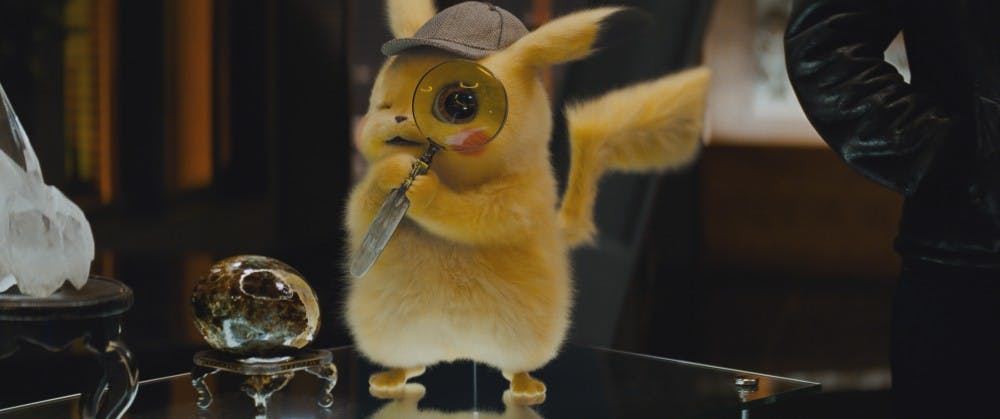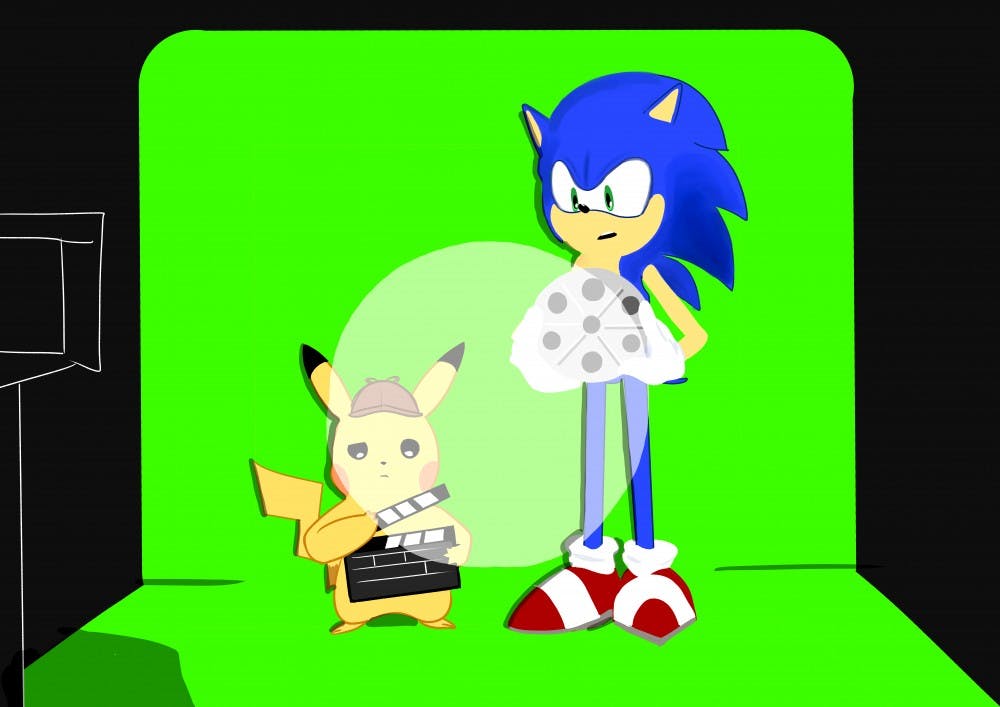2019 is the year to acknowledge the existence of video–game–to–live–action movies: Pokémon: Detective Pikachu is slated for release on May 10, and Sonic the Hedgehog for Nov. 8. Regardless of their future successes or failures, these two movies have the hefty task of bringing nostalgic, beloved worlds and characters to life.
The Pokémon and Sonic franchises are rooted firmly in animation and gaming. Since Pokémon Red and Green were released in 1996 for the Game Boy, the trove of 2D (and 3D since X and Y’s release in 2013) Pokémon RPGs has grown almost every year. Sonic games are also exclusively animated, beginning from the franchise’s very first production, Sonic the Hedgehog (1991) for the Sega Genesis. Over their lifetimes, both Pokémon and Sonic have also dabbled in different forms of entertainment, including movies and TV shows.
The problem that game–to–live–action movies face is their crossover into a different form of entertainment than their original source material.
Sitting down and playing a game is a different experience to sitting down and watching a movie. A good gaming experience can come from a mediocre plot but entertaining gameplay. A good movie–watching experience can rarely be found from a movie with a mediocre plot (unless you're making fun of it while watching). The difference is especially apparent with platformers like Sonic the Hedgehog, or more recently, Super Mario Odyssey. In Super Mario Odyssey, Bowser kidnaps Princess Peach with the intention of marrying her. You play as Mario, who spends most of the game simply chasing after Bowser and Peach. That’s the whole plot. So how does the game average 12 hours of play time? Because games entertain through doing rather than watching. Six hours into Super Mario Odyssey, the goal is no longer to save Peach—it’s to figure out how the heck Toad got onto that platform in the sky, and how to get Mario up there, too.
The same idea applies to the Sonic the Hedgehog platformer and the Pokémon RPGs. But to point at a game’s barebones plot and automatically condemn the entire franchise isn’t the point. Inserting a plot into a game world that was originally developed without one can be successful. Pokémon has circumvented (or ignored) this difference between games and movies for decades, and the franchise has been consistently pumping out animated movies since 1999. The key is to acknowledge the original plot’s flaws, and imagine a new story. Sure, a Sonic movie can be about finding Chaos Emeralds, but it needs to go beyond this basic starting point—something that Sonic the Hedgehog (1991) doesn't do. A movie plot needs more meat to entertain, and a movie based on a massive franchise needs respectable meat to satisfy critical fans.
There’s also another problem with game–to–live–action movies: the “live–action.”
Live–action is not inferior to animation, and vice versa. But the two types of film are constrained differently—real–world physics and the uncanny valley don’t have to apply to animated entertainment, which means Sonic, a smooth, bipedal hedgehog, and Pikachu, a yellow rodent with a thunderbolt–shaped tail, can exist and thrive. When franchises first venture into live–action, their initial, glaring issue is translating their characters into CGI living creatures that could conceivably exist alongside us. Yet the creation of realistic, digestible characters is just the tip of this genre’s potentially problematic iceberg.
Alongside character design, animation also allows for total freedom in world design. When done well, the result is Spider-Man: Into the Spider–Verse or The Legend of Zelda: Breath of the Wild—movies and games that are vibrant and unimaginable in our world. The exaggerated destruction of New York in Into the Spider–Verse conveys disaster, yet the continued use of bold colors throughout the scenes maintain the film’s playful mood—the animated film is able to easily walk a line live–action teeters on.

I have fears for Detective Pikachu and Sonic the Hedgehog. Their introductions to live–action will certainly bring new discourse to stagnating franchises, but new isn’t always good. Given how little information is out right now about Sonic the Hedgehog, for all we know, it might try to just copy and paste a gaming formula into a movie. And Detective Pikachu’s attempts at fusing our world with sorta–freaky pocket monsters might do more harm to the Pokémon legacy than good (like the infamous Super Mario Bros. (1993)). Still, it's hard to not be at least a little excited for Detective Pikachu—can’t resist that pull of nostalgia, man.

